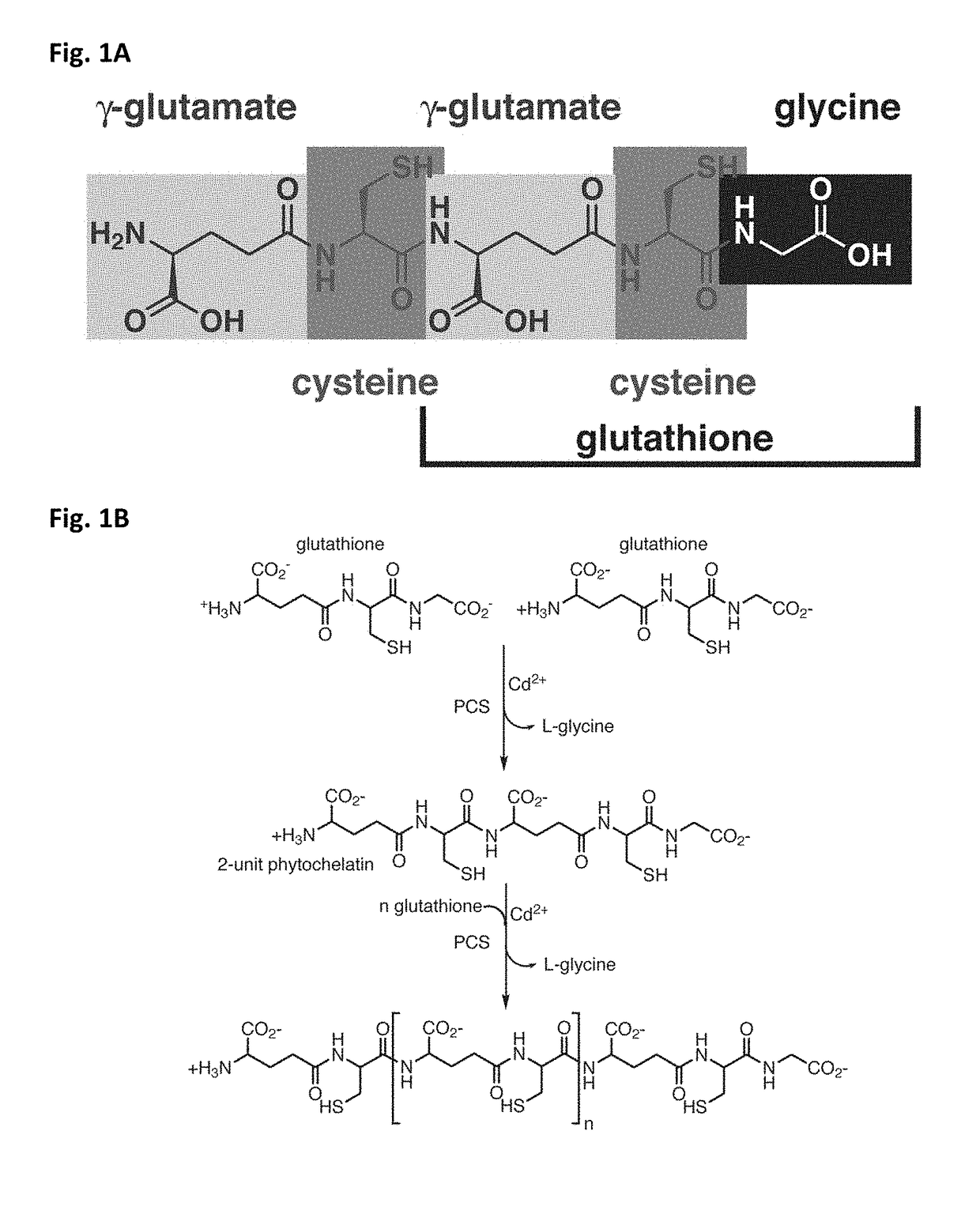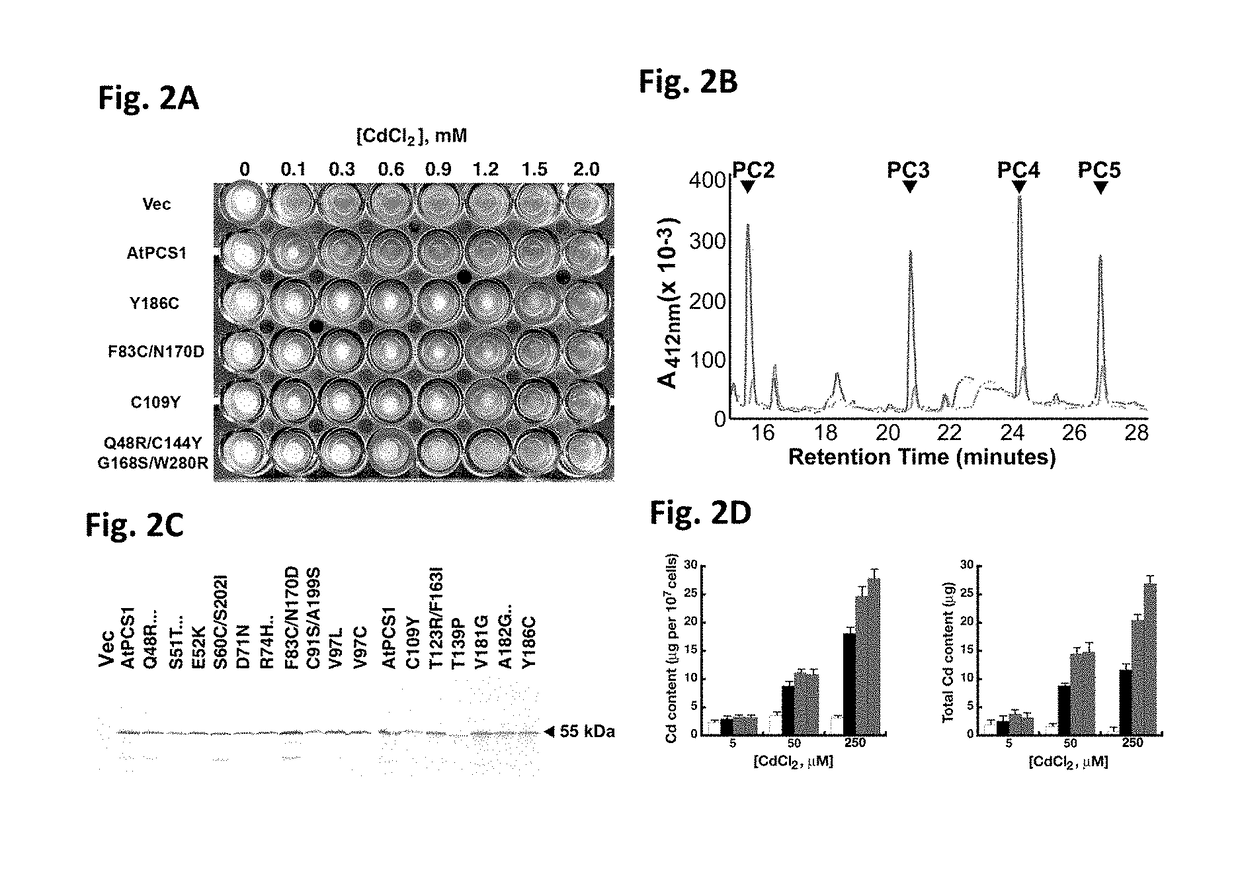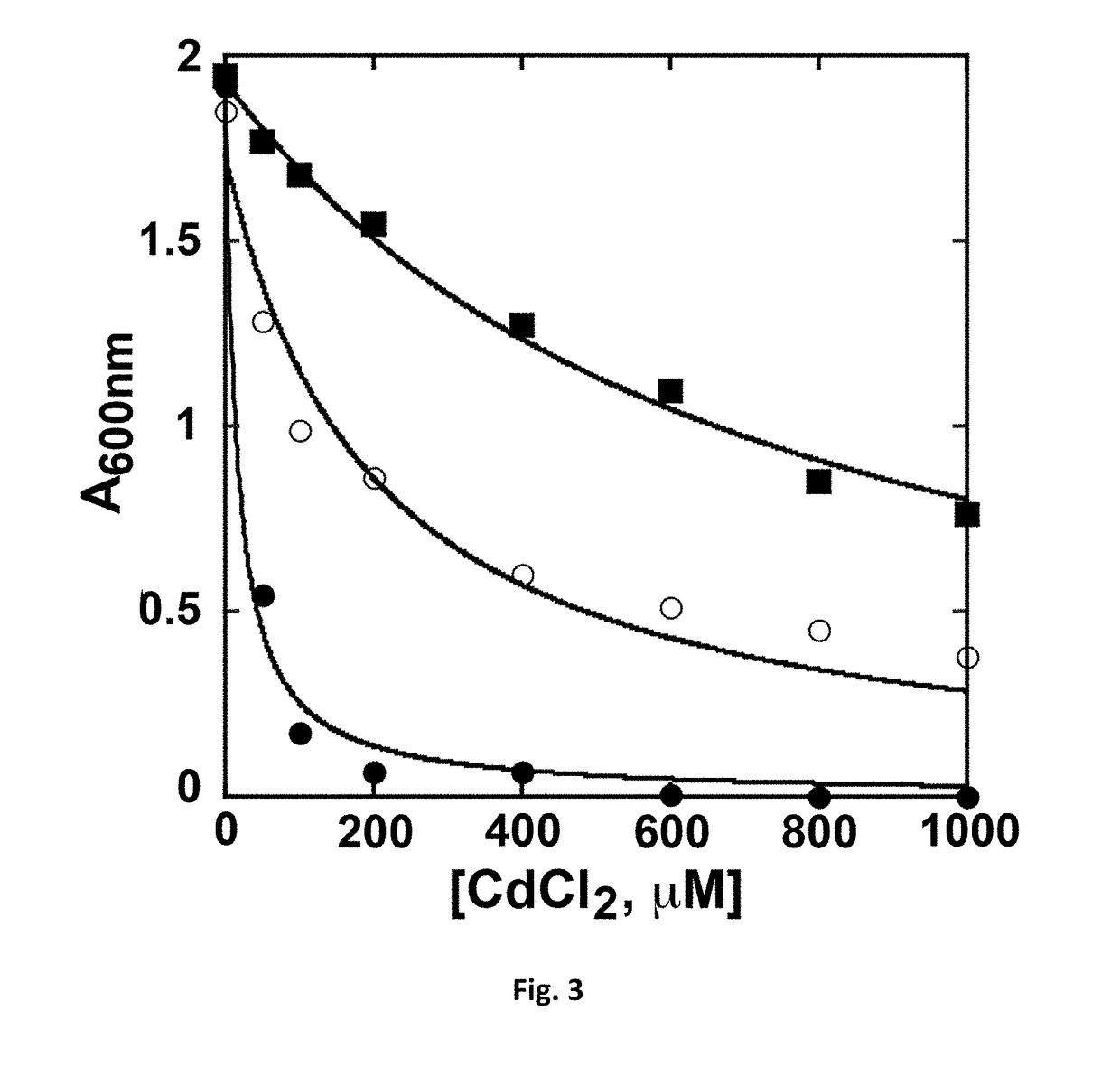Transgenic plants exhibiting enhanced phytochelatin-based heavy metal tolerance and methods of use thereof
a technology of phytochelatin and heavy metals, applied in the field of transgenic plants and remediation of contaminated soil and ground water, can solve problems such as limiting the extent of enhancement, and achieve the effect of decreasing the level of heavy metal in the harvestable portion of the plant and decreasing the level of heavy metal
- Summary
- Abstract
- Description
- Claims
- Application Information
AI Technical Summary
Benefits of technology
Problems solved by technology
Method used
Image
Examples
example i
Mutations in the N-Terminal Catalytic Domain of AtPCS1 Increase Heavy Metal Tolerance
[0088]Random mutagenic PCR was employed to generate a library of AtPCS1 variants that were subcloned into the yeast-E. coli shuttle vector pYES3 for constitutive heterologous expression in the Cd2+-hypersensitive ycf1ΔS. cerevisiae strain DTY167. All AtPCS1 variants were C-terminally FLAG-tagged to facilitate immunodetection. DNA sequencing of 200 randomly selected clones from a total pool of ˜30,000 randomly mutagenized pYES3-AtPCS1::FLAG constructs established that mutations were distributed throughout the coding sequence of AtPCS1. To identify AtPCS1::FLAG mutants that conferred improved Cd2+ tolerance compared to wild-type AtPCS1::FLAG, yeast strain DTY167 transformed with empty pYES3 vector or vector containing either wild-type or mutant AtPCS1::FLAG was plated on agar plates containing 0-1 mM CdCl2. Although the majority of yeast transformants containing either wild-type or mutant pYES3-AtPCS1...
PUM
| Property | Measurement | Unit |
|---|---|---|
| Mass | aaaaa | aaaaa |
| Mass | aaaaa | aaaaa |
| Mass | aaaaa | aaaaa |
Abstract
Description
Claims
Application Information
 Login to View More
Login to View More - R&D
- Intellectual Property
- Life Sciences
- Materials
- Tech Scout
- Unparalleled Data Quality
- Higher Quality Content
- 60% Fewer Hallucinations
Browse by: Latest US Patents, China's latest patents, Technical Efficacy Thesaurus, Application Domain, Technology Topic, Popular Technical Reports.
© 2025 PatSnap. All rights reserved.Legal|Privacy policy|Modern Slavery Act Transparency Statement|Sitemap|About US| Contact US: help@patsnap.com



